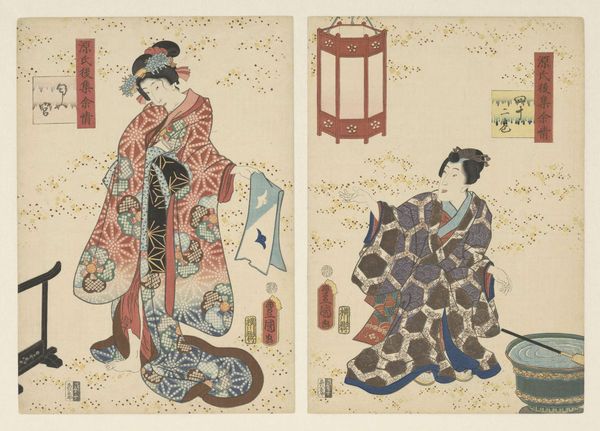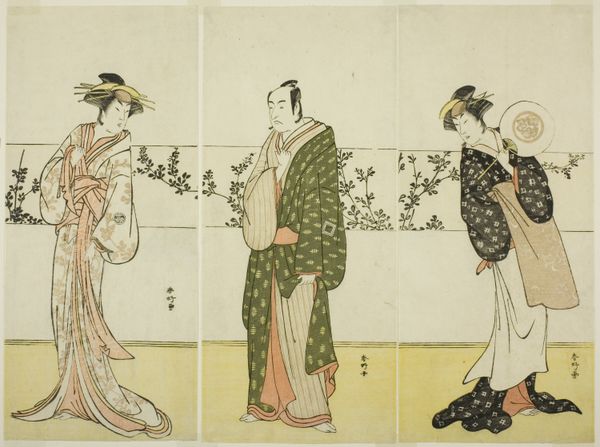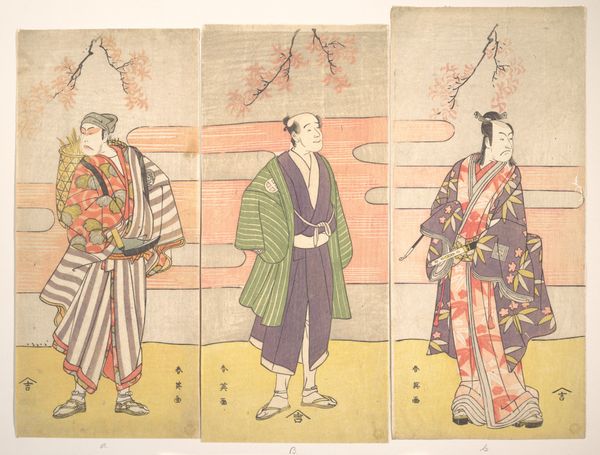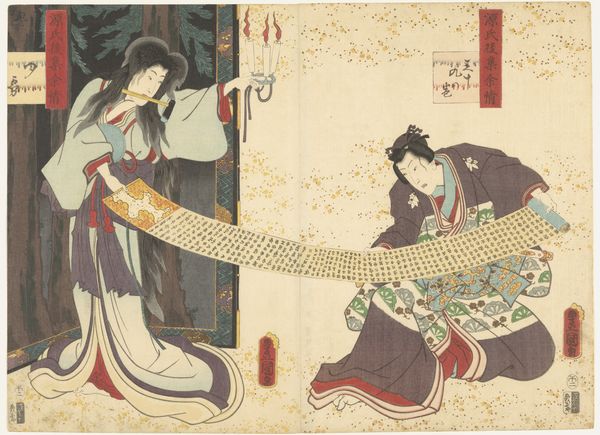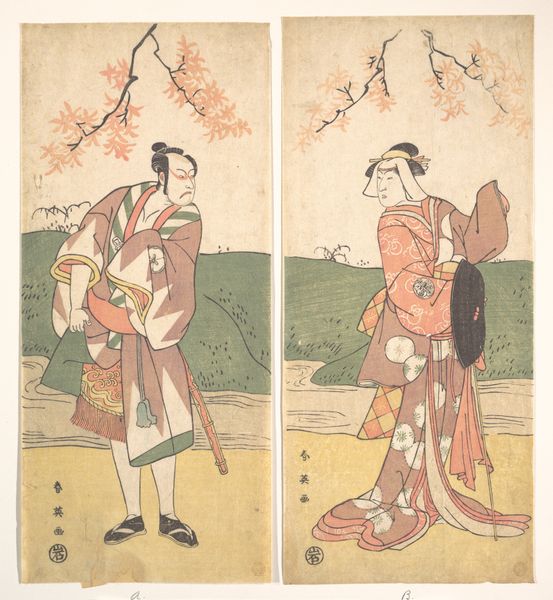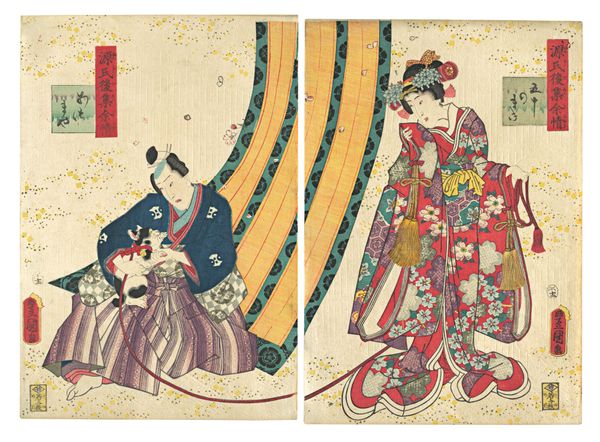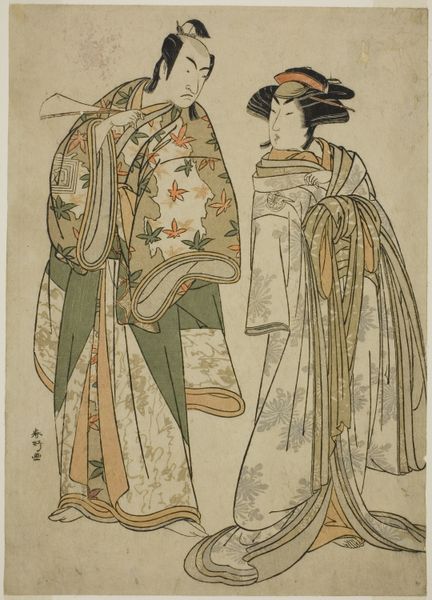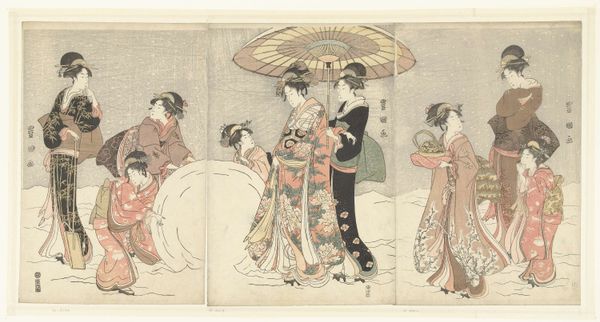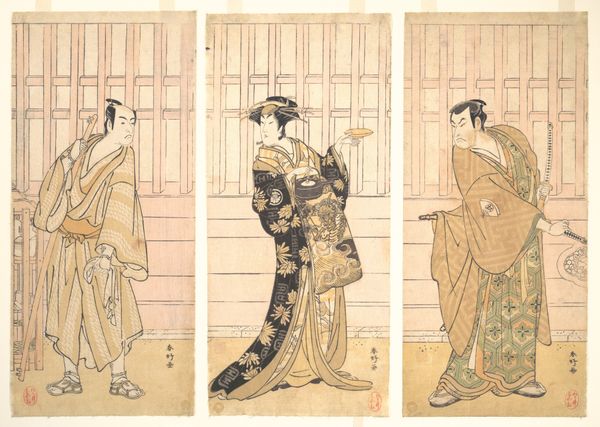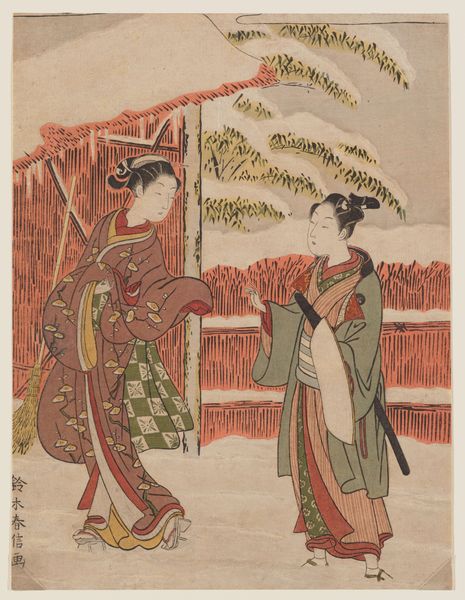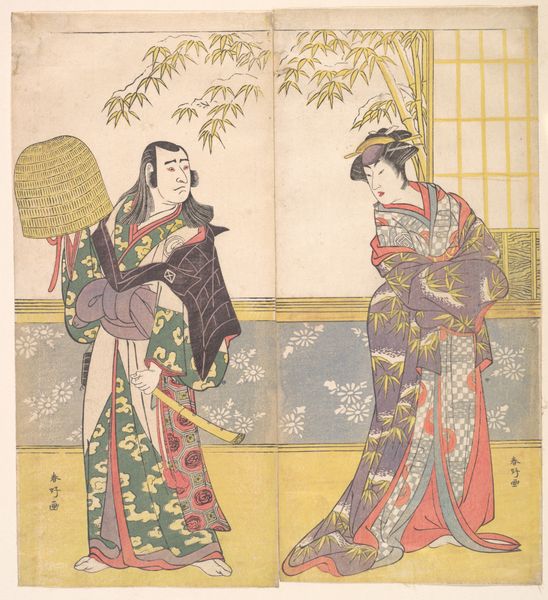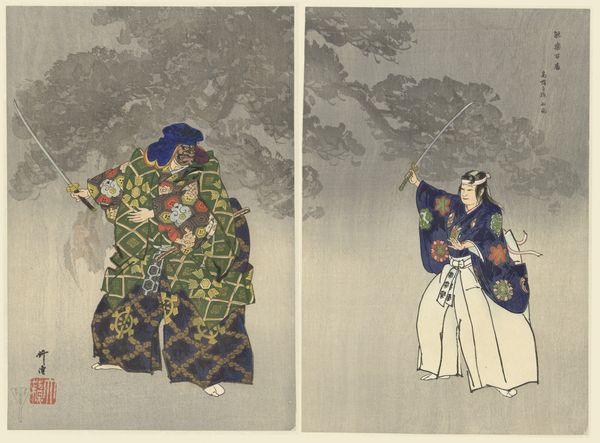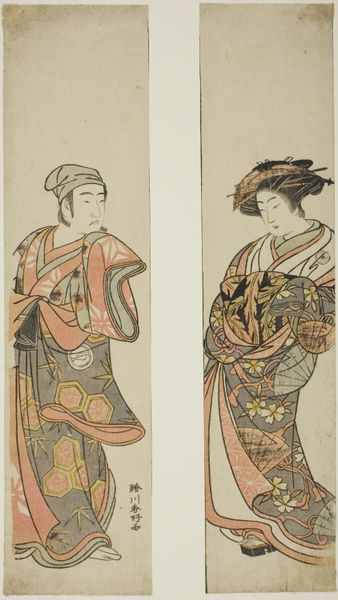
painting, watercolor
#
portrait
#
water colours
#
painting
#
asian-art
#
ukiyo-e
#
japan
#
watercolor
#
historical fashion
#
genre-painting
Dimensions: 7 3/16 x 49 7/16 in. (18.3 x 125.5 cm) (image)7 3/16 x 70 1/16 in. (18.3 x 178 cm) (mount) 20cm H w/roller
Copyright: Public Domain
Curator: Standing before us is a Japanese watercolor from around 1790 by Jokei. It is titled “Seven Great Osaka Actors in Favorite Roles” and is an exceptional example of the Ukiyo-e style of genre painting. Editor: My first thought is how incredibly composed it is. The artist created a perfect symmetry with two figures in ornate costumes, yet somehow it's not static; there's a real sense of character and narrative hinted at here. Curator: Yes, the Osaka actors. Consider the role of the Kabuki theatre, it served as a vital space for cultural commentary and satire, particularly during periods of rigid social hierarchy. Editor: Right. It wasn't just entertainment. These actors held immense cultural sway, embodying different aspects of Japanese society and its values. Looking at the actor on the left, with his swords and severe expression, what narratives would he typically represent? Curator: Given his attire, with the swords prominently displayed, and what appears to be the costume of a samurai figure, this suggests roles emphasizing bravery, perhaps those intertwined with feudal duties or even exploring the tensions between loyalty and personal desires, themes frequently depicted on stage and later adopted in other forms of imagery, contributing to the visualization of the idealized Japanese man, particularly as a public and recognizable symbol. Editor: And on the other side, the female figure appears delicate and restrained and the choice of color is fascinating—soft floral patterns cascading down her kimono, a stark contrast to the somber tone of the warrior on the left. Curator: Precisely, consider also that the floating-world aesthetic extends from stage portrayals and popular ephemera to shape societal understanding of gender roles, the public images of Kabuki stars help influence popular perceptions on male heroism, and ideals around womanhood through depictions in artwork and prints. Editor: So it’s about more than individual identities, or an objective interpretation of those roles... it's about the social roles and constructions imposed on and by the theatrical figures of the period. That performative element spills out into real-life societal expectations. It's not merely historical representation; it’s deeply enmeshed with shaping cultural understanding and norms. Curator: I'd agree. Thinking about it in this context, allows for a modern examination of societal pressures and what expectations continue to shape and possibly confine representation even today. Editor: Absolutely. Art gives us a window into not only the past, but how those echoes of the past continue to reverberate in our present and our shared values.
Comments
minneapolisinstituteofart about 2 years ago
⋮
Osaka was a growing city in the Edo period and a thriving center of commercial activity. With its wealthy merchants, Osaka developed its own unique urban culture. While it had licensed pleasure quarters, it was better known for its puppet plays and Kabuki theater. Consequently, paintings and prints from Osaka featuring Kabuki actors far outnumber those showing beautiful women. The artist Jokei specialized in portraits of famous actors. For this short handscroll he depicted seven popular Kabuki actors; each performed in one of five different plays staged in Kyoto and Osaka between 1782 and 1787. Jokei developed a relatively realistic style and didn’t flinch from depicting the less flattering characteristics of the actors’ features, like puffy faces.
Join the conversation
Join millions of artists and users on Artera today and experience the ultimate creative platform.
